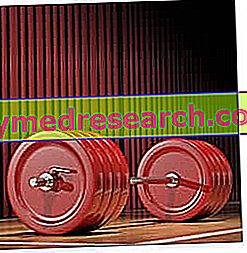By Dr. Antonio Parolisi
Evaluation of the muscle structure of the sura triceps for a growing profitable training
All muscle fibers must be involved for muscle growth. This means that gastrocnemi should not be trained only with long series and medium-low loads, just as the growth of the soleus should not be stimulated only by short series and medium-high loads. All the fibers that make up a muscle must be adequately stimulated by training.
The greater work should be done for the specificity of the muscle in question, however a training that includes, for example in the case of the gastrocnemius, low repetitions with medium-high loads must also be taken into consideration.
This is true for most people but for a proper structuring of a training program it is expected that all the muscles should be tested, in order to understand the composition in terms of fibers.
It is likely that a subject has a greater composition of white fibers in the gastrocnemi (very unlikely but possible) and red in the soleus or vice versa. Nothing is written in the Bible!
But how do we understand the composition of a muscle?
For further clarification, see the article CUSTOMIZED TRAINING.
In any case, this brief procedure can always be applied: test the 1RM (1 maximum repetition) for that exercise, perhaps using the formula:
1RM = load lifted / 1.0278- (0.0278 * number of repetitions performed)
Once aware of the ceiling, 80% of that load is used and the greatest number of repetitions are performed. With this load there are people who are able to cover a set of maximum 5-10 repetitions and others that can cover even more than 15.
From this simple test you can get an idea of the amount of red fibers present in the examined muscle. So in the case of the standing calf most (but not all) people manage, with 80% of 1RM, to perform more than 10-15 repetitions; this indicates that the muscle in question is rich in red fibers. But other people barely cover 7-10 repetitions, so they should be trained with the criterion of white fibers.
You can apply these simple tests to understand in which direction to orient yourself for calf training. Let's take an example in order to understand in practice how to structure a workout for the growth of these muscles.
We have the case that in the test the subject has practiced about 17 repetitions with 80% of the 1 RM; so there is no doubt that he enjoys good strength in those muscles, which supports the fact that his muscular structure is mainly made up of slow-twitching fibers (therefore red). And the soleus after the test it is understood that it is to constitution of fast fibers (therefore white).
The subject will have to train the calves with long series, medium-low loads and low recovery times (about 45 seconds) for the gastrocnemi, while for the soleo low series, medium-high loads and long recovery times (about 90 seconds); in order to understand each other:
standing calf 6-8 sets of 30 repetitions (approximately 90 seconds of active work) with recovery of approximately 45 seconds;
calf seated 3-5 sets of 10 repetitions (approximately 30 seconds of active work) with recovery of approximately 90 seconds.
The standing calf should be performed up to 3 times a week, while for the sitting calf only one time may suffice; the advice in the latter case is to train the soleus in the same session of the squats, so as to train him "indirectly" with the squat and "directly" with the calf seated.
Obviously this was just an example but based on the results of the test you can plan a program as detailed as possible, especially for the calf muscles that often represent that district that, at least in natural athletes, is more difficult to volumize.
So hard training, with criteria and lots of patience.
Good training for everyone.



